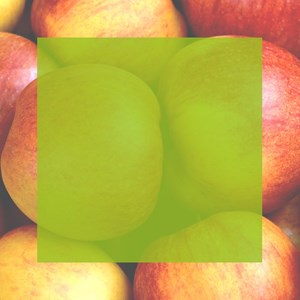Blood pressure is the force exerted by the blood against the walls of the blood vessels, caused by heart contractions forcing a constant volume of blood around a closed system. Systolic blood pressure results from heart contraction of its ventricles. Diastolic blood pressure results from the resting stage of the heart’s rhythm. Normal average systolic/diastolic blood pressure in a healthy adult of average size and weight is averaged as 120/80 mm Hg.
Systolic and Diastolic readings a brief overview
There are many factors that influence elevated blood pressure and diet is an important aspect to address. Systolic blood pressure naturally increases with age; a male-aged 50 for example would expect a systolic blood pressure of approximately 134.
With regard to the two parameters of blood pressure it is worth noting that in many cases the systolic is especially relevant. The reason is that as middle age advances it is the systolic pressure that provides a more accurate indicator of high blood pressure.
A reading of 140 is generally considered high, and it can show a sharp increase until about the age of 55 and then does very often decline. The increase of systolic pressure can also lead to the need to visit the toilet during the night due to stress on the kidneys often caused by excess sodium.
The kidneys flush both water and sodium from the body through urine. The flushing of the urine is part of the body’s attempt to reduce the total sodium level.
World Health Organization Hypertension Classification
| |
Systolic (mm Hg) |
Diastolic (mm Hg) |
| Optimum |
<120 |
<80 |
| Normal |
<130 |
<85 |
| High-Normal |
130 - 139 |
85 - 89 |
| Grade 1 Hypertension |
140 - 159 |
90 - 99 |
| Grade 2 Hypertension |
160 - 179 |
100 - 109 |
| Grade 3 Hypertension |
>180 |
>110 |
It is interesting to note that figures show that more than 50% of people over the age of 65 in the USA are afflicted with hypertension.
Factors that affect blood pressure
The proper healthy functioning of the Heart, including the rate, force and volume per beat, greatly affects blood pressure, as does the elasticity of the blood vessels, the resistance to blood flow and viscosity of the blood.
A negative coronary disturbance (such as elevated blood pressure) is at least in part due to unsuitable lifestyle, and most commonly affects males over the age of 40 and females over the age of 60. Contributory factors include inappropriate dietary intake, inadequate exercise, excess stress and a host of additional factors, not forgetting the importance of water, the homocysteine connection, and the vitamins, minerals and foods that can help support cardiac health.
The heart essentially is a muscular organ composed of 4 chambers. These chambers are used to accept oxygenated blood and deoxygenated blood separately and then pump that blood to the rest of the body (oxygenated) or to the lungs (deoxygenated – for oxygenation). The maintenance of proper heartbeat (regular pumping of blood around the body) therefore requires us to pay attention to our dietary intake and lifestyle.
For persons that consider their daily routine to be a continuously stressful event there could be a need to consider the adrenergic nervous system (responsible for the fight or flight adrenalin based human responses). The advice again is to consult a medical practitioner. The adrenergic response is one situation that can be considered as a contributory factor responsible for increasing blood pressure (due to its role in causing vasoconstriction of the blood vessels).
At the same time it speeds up the heartbeat to pump more blood round the system to prepare the body for what lies ahead. This is why stress is known to increase blood pressure as stress triggers the adrenergic nervous system.
Cholesterol levels are a key factor with regard to monitoring elevated blood pressure and testing for levels is sensible. It is interesting to note from many published medical papers that one day cholesterol may be exonerated from its role as the main ’villain’ in hypertension and other cardiovascular diseases - many experts believe that the current focus on cholesterol is misplaced.
It is interesting to note that approximately 30% of the body’s cholesterol content is derived from dietary sources. In practice 50% of dietary cholesterol is absorbed by the body - the remainder passes through the body unused and is excreted via the bile.
Unnecessarily lowering cholesterol below optimum levels is known to have detrimental effects on the body. It is a little known fact that optimum cholesterol levels actually help us counteract excessive stress, and this situation is also exacerbated by excessive stress, which actually causes the body to produce higher than desirable levels of cholesterol. Optimum cholesterol levels are also helpful to the skin.
Optimal cholesterol is also associated with a reduction in the incidence of depression.
It is interesting to note that although the reasons behind it are not fully understood; people afflicted with male pattern baldness are more likely to suffer high blood pressure than those not affected in this way.
Body Mass Index (BMI)
Body mass index (BMI) is relevant to the reduction of blood pressure. This index is associated with dietary intake. The text here is for interest and should not be considered as an alternative to medical advice.
As a guide, the following formula is offered for consideration with regard to the BMI, although, once again, people suspecting elevated levels in blood pressure should consult their medical practitioner. However the following is offered:
To calculate your BMI there is a simple three-step method, which is as follows:
1. Multiply your weight in pounds by 703.
2. Divide the answer by your height (in inches)
3. Divide the answer again by your height (in inches) to obtain your BMI.
A normal BMI result should be in the region of 18.5-24.9. Should the result be within this range then this is good and try to retain this level.
An overweight reading would be between 25-29.9, and if you are within this range you are advised to pursue weight reduction which may be supported with a medical consultation.
It is advisable to reduce weight slowly when high blood pressure is experienced. The aim should be between one to two pounds each week. This is the healthiest way to lose excess weight and importantly, it increases the chances of long-term success.
Exercise is very important with regard to weight, and adopting a sensible exercise program is advised, with progress dependant on the ratio between calorie intake and calories "burned" each day.
Before you start, you may wish to consider our Detox Formula which will cleanse your body and aide your gut's ability to absorb the nutrients within the High Blood Pressure program. It will also help replenish the intestinal tract with healthy flora and enhance your overall health and wellbeing.
Supplements
The following supplements that are known to be helpful.
SUPPLEMENT SUGGESTIONS
| |
Formula |
Daily Intake |
Initial Period |
Ongoing Intake |
Ongoing |
| Vitamins |
Multivitamin-Mineral |
1 Twice Daily |
2 weeks |
1 daily |
1 daily |
| |
Vitamin E |
1 Twice Daily |
2 weeks |
1 daily |
1 daily |
| |
Vitamin B Complex |
1 Twice Daily |
2 weeks |
1 daily |
1 daily |
| Minerals |
Magnesium |
1 Twice Daily |
2 weeks |
1 daily |
1 daily |
| Beneficial Facts |
Essentiall Fatty Acid Complex |
1 Twice Daily |
2 weeks |
1 daily |
1 daily |
| |
GTF Chromium with Anti-Oxidants |
1 Twice Daily |
2 weeks |
1 daily |
1 daily |
| Specific Formula |
Probiotic |
One Month course |
As required |
Repeat after 3 months |
As required |
| |
|
|
|
|
|
| Antioxidants |
Anti-oxidant complex with Q10 |
1 Twice Daily |
2 weeks |
1 daily |
1 daily |
Dietary Recommendations
This list is offered as a guide only to those foods and other herbs that can help with the management of high blood pressure.
Positive Foods
Cereal grains oats, barley (pearled), rye, organic wheat germ, whole brown rice, wheat grass.
Vegetables celery (leaves and stalk), cauliflower spinach, broccoli, beetroot, garlic, onions, sweet potatoes, green leaf cabbage, carrots, lettuce and turnip.
Fruits freshly squeezed & diluted lemon juice, avocado, apples including pips if organic, ripe bananas, red grapes, pears, ripe pineapple (inc. central stalk), blackberries, bilberries, blueberries, blackcurrants, redcurrants, and dates.
Legumes, dried peas, soya beans & soya protein, lentils, barley, meso green peas and barley.
Teas, Herbs & Spices ginger tea, green tea, black teas, camomile, rosemary tea, fresh black pepper, turmeric, chillies, basil, dill, echinacea.
Nuts & Seeds hazelnuts, walnuts, almonds (no more than 12 per day), cashew, macadamia, pistachio, pecan, chestnuts and pine nuts.
Sunflower seeds celery seeds, pumpkin seeds, sesame seeds, flax seeds.
Fungi Shiitake, Reishi, Oyster and Maitake mushrooms.
Fish/sea-food sardines, eel, cod, tuna, wild salmon, prawns, haddock and occasional lobster.
Dairy live organic yoghurt, cottage cheese (no more than 2 ounces a day).
Fats olive oil, flax seed oil, extra virgin olive oil.
Meats: Organic chicken, beef, liver-from free range lamb or cows.
Additional Foods activated charcoal.
Negative Foods
Cereal grains refined cereals, refined flour products, refined pasta.
Vegetables excess garlic, liquorice (root).
Fruits orange, orange juice, grapefruit & grapefruit juice.
Legumes soya milk.
Teas, Herbs & Spices
Nuts & Seeds old Brazil nuts and high intake of peanuts.
Fish mackerel, salmon, caviar, crab and shrimp.
Poultry battery chicken, hens’ eggs.
Meats pork & pork products, salami, veal, reducing intake of proteins from red meat for 2-3 months is beneficial.
Dairy cow’s milk, reducing dairy to a minimum, reduce non-organic cheese.
Fats hydrogenated fats, refined cooking oils, fennel oil, trans-fatty acids.
Food Additives tartrazine, artificial sweeteners, sulphates (preservative).
Beverages avoid excess caffeine & alcohol; avoid artificially sweetened drinks.
Avoid low fat foods, refined carbohydrates, white sugar (sucrose), high additive processed foods, artificial sweeteners, chocolate, pickled foods and moderate salt intake. Additional information regarding salt is at the end of the text.
Cooking methods fried foods, barbequed foods.
Additional Comment
- As part of a healthy lifestyle, it is well understood that smoking is deleterious to good health. Tobacco smoking may increase the risk of Hypertension.
Being aware of appropriate weight management is also well understood.
- Less well discussed in relation to good health, however, is the importance of our feelings and emotions. Lack of self-esteem is so often associated with poor eating and lifestyle habits. All of us have positive aspects to our life, and focusing on these will improve our well-being.
- It is important that attention is paid to the balance between acid-forming and alkali-forming foods. The optimum balance is around 60% alkali-forming and 40% acid-forming. See Acid-Forming and Alkali-Forming Food Charts and Guidelines on this website.
- Adopt a diet based on organic wholefoods, vegetables, fruits and grains.
- Raw foods such as salads and fruits should be about 20% of the daily food intake for optimum health benefits.
- There is benefit in eating in a specific order: fresh ’live’ foods first such as salads to prepare the digestive system. Next follow with cooked vegetables, then proteins. Anything starchy should be last. Eating in this order ensures food enters the digestive system in order of digestion time.
- Chew foods slowly and thoroughly, as this increases their nutritional benefits, particularly as we get older.
- Research has shown that reducing intake of dairy products in later life is beneficial.
- It is best to reduce red meat within the diet to occasional intake. As a general guide, the best meat sources are lamb, and with regard to poultry, properly-fed and organically-reared chicken.
- White fish are generally the better option. Coastal fish such as mackerel are best reduced, as they tend to contain more of the undesirable toxic pollutants.
- As the years progress it is sensible to reduce the total intake of refined sugars.
- Avoid dehydration - take plenty of fresh water. Good quality still mineral water from a glass container is the superior form; though a good tap filter is also satisfactory.
During exercise, the body loses up to 3 litres and it is good to remember that muscles are composed of 70% to 75% water.
- Adequate water intake is known to help reduce the feeling of tiredness and fatigue.
Increased intake of water can help to reduce weight.
- Foods cooked in aluminium cookware reduce water’s ability to be used by the body.
- Avoid high intake of beverages containing caffeine, e.g. excess coffee, artificially sweetened fizzy (carbonated) and still drinks, and soft drinks high in sugars ending in ’-ose’ such as ’sucrose’, ’glucose’ and ’fructose’.
- Take alcohol only in moderation as it can aggravate negative symptoms. Good quality organic wines can contribute to good health, spirits, beers and lagers less so. Organic red or white wine can be taken, but no more than 1 glass a day is suggested. Spirits should be avoided for a period of at least four months after dietary reform, and beer kept to an absolute minimum.
- Vegetarians consistently have markedly less high blood pressure levels than meat-eaters. However it is not always suitable to people to take up a vegetarian diet.
- Take exercise as much as possible out of doors in clean air. This does not mean that high exercise programs should be taken during the early stage of increasing exercise - quite the reverse. Prolonged exercise in air conditioning with artificial lighting should be no more than an hour at one time.
Isotonic exercise has been found beneficial in reducing muscle weakness.
- Sunlight has a beneficial effect on the whole person, and is also known to alleviate the experience of fatigue that can also occur with extended periods of exposure to artificial lighting.
Wearing sunglasses can reduce energy levels, as they block out some beneficial rays that can actually enhance energy. Men should try to avoid pink tinted glasses.
- Try to obtain cosmetics that are not full of chemicals. There is a saying: "If you can’t eat the ingredient safely, then it may be best not to put it on your skin".
- Avoid shampoos and soaps containing Sodium Lauryl Sulphate. Cosmetic substances often contain the nasty additive called Sodium Lauryl Sulphate. This toxic substance should be avoided as it does accumulate in the liver and other organs. It is found in toothpaste shampoo, detergents and hand lotions amongst other products.
- Antiperspirants are usually applied to help reduce body odour. However, these preparations contain aluminium, which actually gets absorbed into the body. This metal is known to produce many undesirable toxic side effects.
- Far infrared radiation therapy has been shown to reduce high blood pressure.
- Fluoride should be avoided as much as possible. This substance is found in some meats, dental products and even air pollution contains this undesirable substance. The list of adverse conditions this substance contributes to is too long to list here. Avoid if possible those materials, food and cosmetic products as best one can. Fluoride is probably necessary to good health but the best source is from natural foods such as ripe bananas, cabbage and tea! The chemical form added into many products is thought by many to speed up the aging process. Fluoride is implicated with both male and female infertility.





